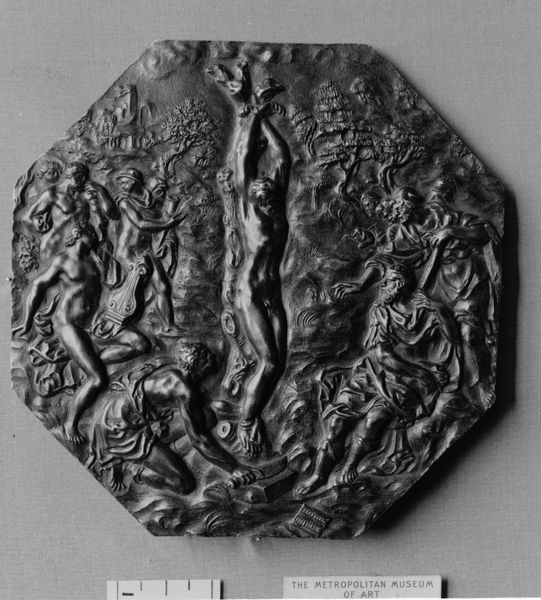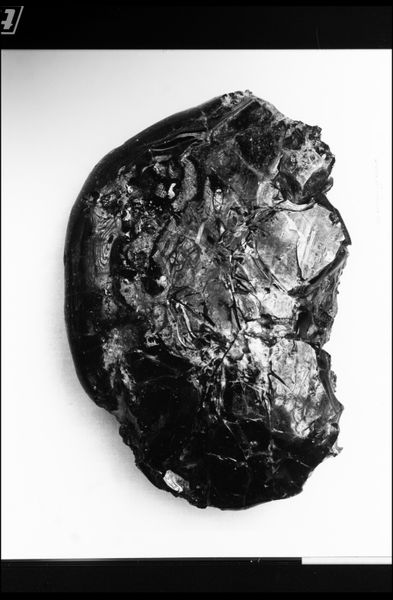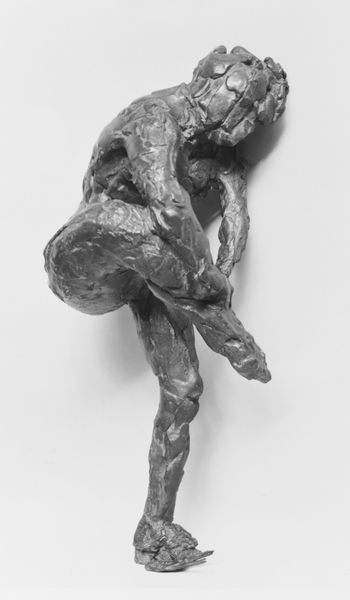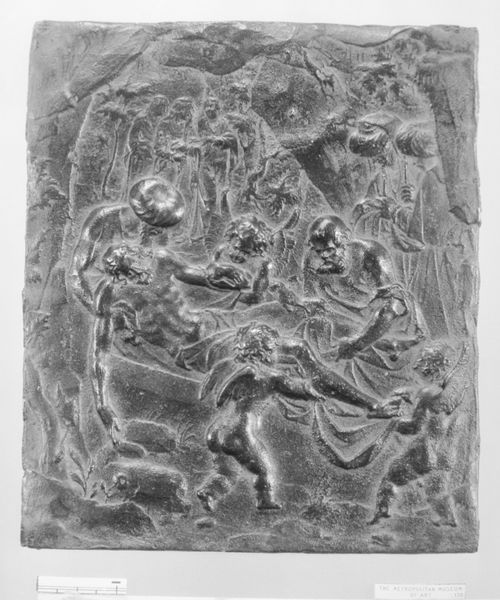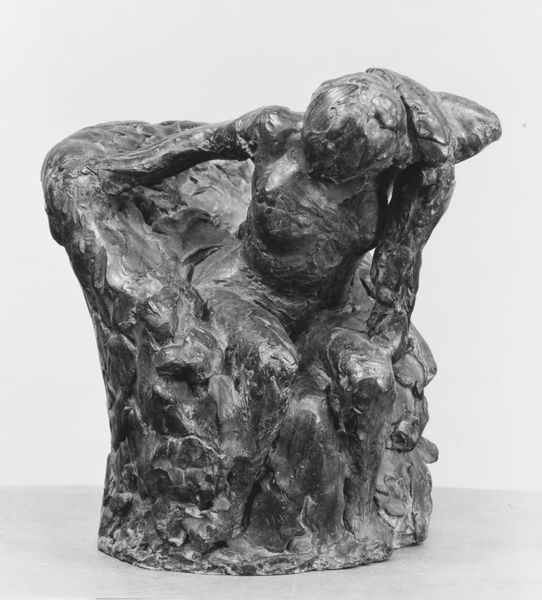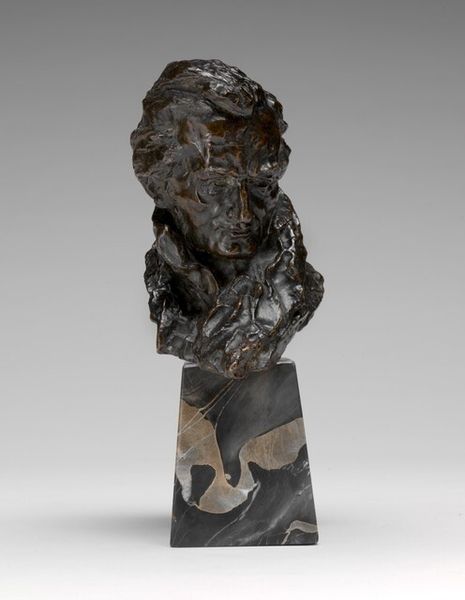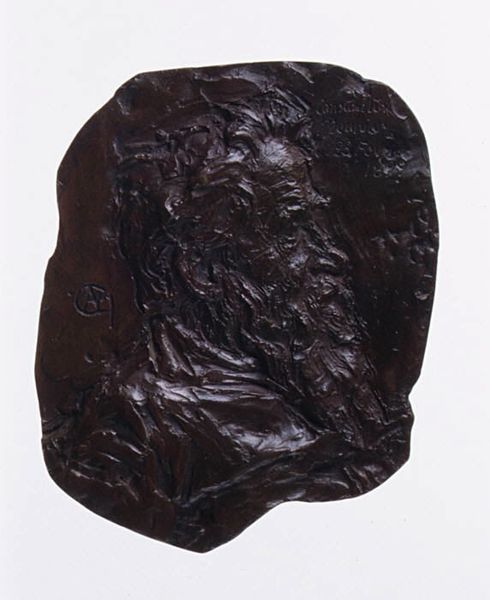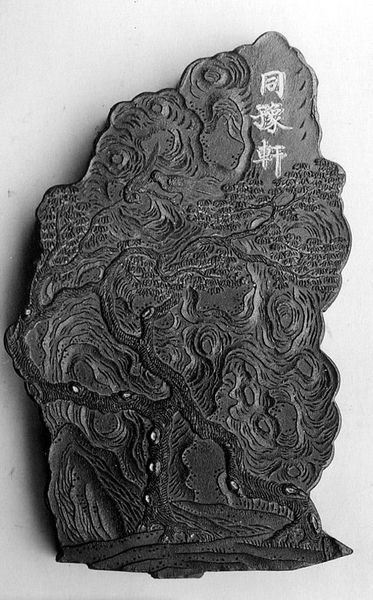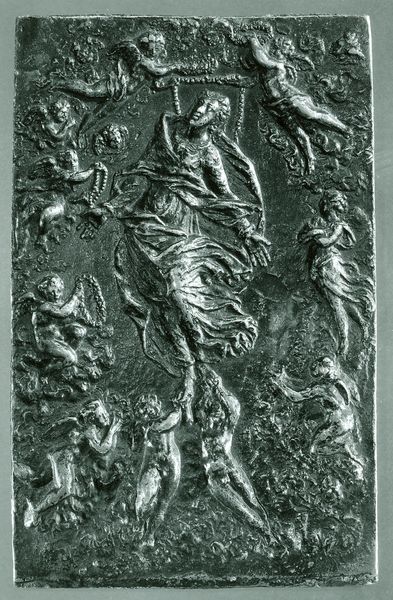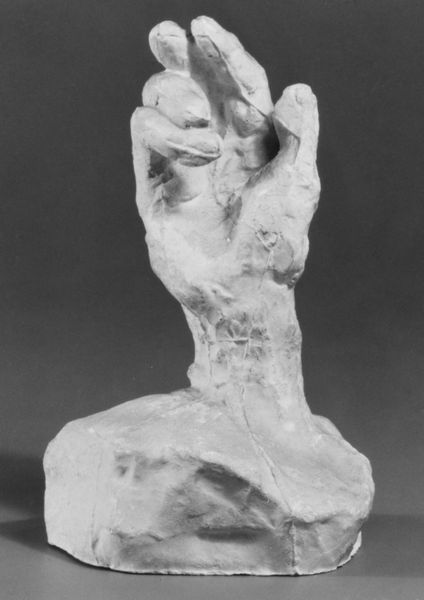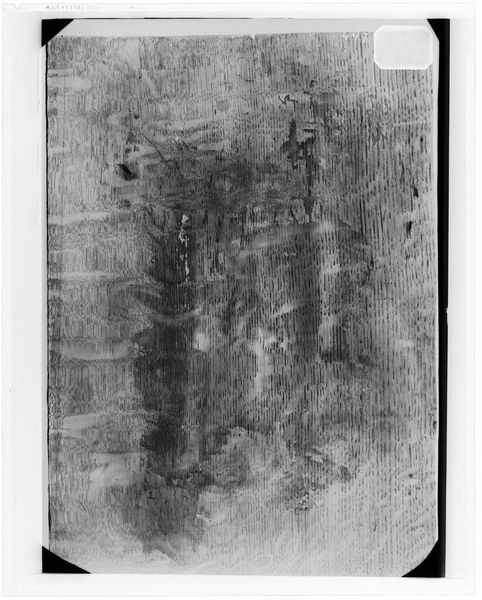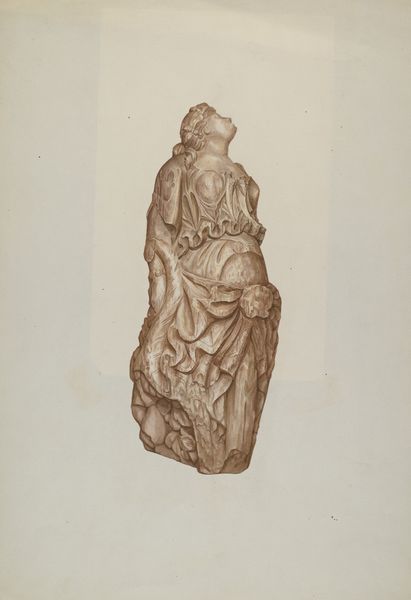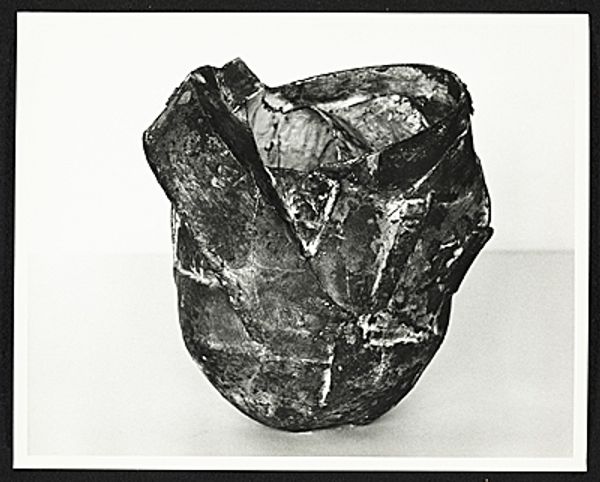
Dimensions: 9 15/16 × 8 3/16 in. (25.2 × 20.8 cm)
Copyright: Public Domain
Editor: This bronze relief, "The Painter Maximilien Luce" by Alexandre Charpentier, made in 1891, has such a tangible, weighty presence. I’m struck by the rough texture of the bronze contrasting with the smooth wooden plaque. How do you interpret this work, and what visual language is at play here? Curator: The roughness you perceive is no accident. It speaks to a deliberate intention to connect with the sitter beyond mere surface likeness. Note the profile, a classical trope – often associated with power and nobility – yet rendered in a way that feels very modern. What does that tension tell you? Editor: That’s interesting, it does bring it to a personal, more intimate level. I also notice the sitter, Luce, appears focused, almost contemplative. Curator: Exactly. Consider the late 19th century, a period of intense social and industrial change. Luce, as a painter, would have been a visual recorder of these shifts. This relief is not just a portrait; it's an attempt to capture the essence of a modern artist grappling with a rapidly evolving world. What symbolic weight do you ascribe to that, given how artists continue to portray each other? Editor: So, it’s more than just depicting his likeness, but the act of creation, of being an artist in that era… It makes me think about how portraits always tell us as much about the subject as they do the time in which they were made. Curator: Precisely. The work's visual language speaks to artistic identity, creative insight, and a specific cultural moment—themes that resonate even today. It’s a dialogue across time. Editor: This has really opened my eyes; it’s fascinating to see how symbols embedded in this piece tell so much more about both the artist and his world. Thank you.
Comments
No comments
Be the first to comment and join the conversation on the ultimate creative platform.
